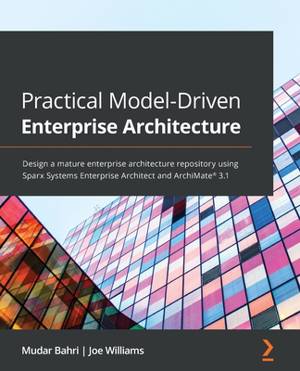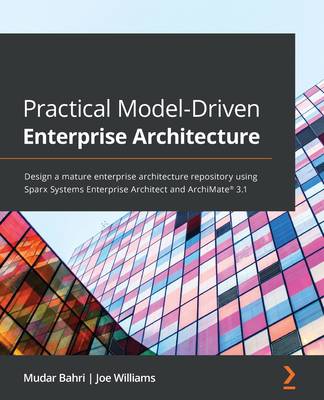
- Retrait gratuit dans votre magasin Club
- 7.000.000 titres dans notre catalogue
- Payer en toute sécurité
- Toujours un magasin près de chez vous
- Retrait gratuit dans votre magasin Club
- 7.000.000 titres dans notre catalogue
- Payer en toute sécurité
- Toujours un magasin près de chez vous
Practical Model-Driven Enterprise Architecture
Design a mature enterprise architecture repository using Sparx Systems Enterprise Architect and ArchiMate(R) 3.1
Mudar Bahri, Joe WilliamsDescription
Bridge the gap between theory and reality by implementing real-world examples using the Sparx EA tool and ArchiMate(R) 3.1 specification to develop sophisticated enterprise architecture models serving every unit in your organization
Key Features:
- Discover the various artifacts that enterprise architects need to develop for stakeholders to make sound decisions
- Build a functional enterprise architecture repository that is rich in information, references, and metamodels
- Learn how to use Sparx Enterprise Architect from scratch
Book Description:
Most organizations face challenges in defining and achieving evolved enterprise architecture practices, which can be a very lengthy process even if implemented correctly. Developers, for example, can build better solutions only if they receive the necessary design information from architects, and decision-makers can make appropriate changes within the organization only if they know the implications of doing so.
The book starts by addressing the problems faced by enterprise architecture practitioners and provides solutions based on an agile approach to enterprise architecture, using ArchiMate(R) 3.1 as an industry standard and Sparx EA as the modeling tool. You'll learn with the help of a fictional organization that has three business units, each expecting something different from you as the enterprise architect. You'll build the practice, satisfy the different requirements of each business unit, and share the knowledge with others so they can follow your steps. Toward the end, you'll learn how to put the diagrams and the content that you have developed into documents, presentations, and web pages that can be published and shared with any stakeholder.
By the end of this book, you'll be able to build a functional enterprise architecture practice that supports every part of your organization. You'll also have developed the necessary skills to populate your enterprise architecture repository with references and artifacts.
What You Will Learn:
- Discover how enterprise architects can contribute to projects and departments within organizations
- Use Sparx Enterprise Architect to build a rich architecture repository
- Learn about the ArchiMate(R) 3.1 specification as you apply it in real-world projects
- Use the focused metamodel technique to build the information necessary for maintaining your repository's consistency and accuracy
- Understand the importance of keeping architectural artifacts simple yet eye-catching
- Define an operational model that fits your initial needs and expands as required
Who this book is for:
This book is for enterprise architects at all architectural layers and practices of any maturity level. Many of the artifacts suggested in this book are inspired by The Open Group Architecture Framework (TOGAF(R)); however, familiarity with TOGAF(R) is not required. Whether you work within the business, applications, data, or technology layers, this book covers examples that apply to your work. Although not mandatory, experience modeling in Sparx Systems Enterprise Architect using any modeling language will be helpful. No prior knowledge of ArchiMate(R) is required to get started with this book.
Spécifications
Parties prenantes
- Auteur(s) :
- Editeur:
Contenu
- Nombre de pages :
- 412
- Langue:
- Anglais
Caractéristiques
- EAN:
- 9781801076166
- Date de parution :
- 13-05-22
- Format:
- Livre broché
- Format numérique:
- Trade paperback (VS)
- Dimensions :
- 190 mm x 235 mm
- Poids :
- 703 g







